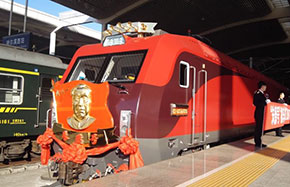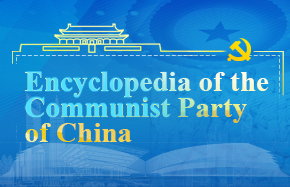Private ?nance called vital for Belt and Road
 |
|
Michelle Karavias, global head of infrastructure research at BMI Research, says that innovative ?nancing structures to de-risk projects would help motivate private sector ?nancing. PROVIDED TO CHINA DAILY |
The Belt and Road Initiative calls for innovative ?nancing methods to unlock private sec-tor capital and enable its long-term sustainable development, according to Michelle Karavias, global head of infrastructure research at BMI Research, a subsidiary of the US rating agency Fitch.
Innovative ?nancing structures to de-risk projects, such as loan guarantees, would help motivate private sector ?nancing, says Karavias. Meanwhile, the emerging new multilateral development banks, such as the Asian Infrastructure Investment Bank, can use their ?exibility and innovation to con-tribute to tackling global infra-structure ?nancing challenges, she adds.
Innovative ?nancing structures can help mitigate the risks that would otherwise be present in countries covered by the Belt and Road Initiative, and such an inclusive approach to achieving growth through the public and private sectors' concerted efforts is coherent with China's ideology of inclusive growth, she says.
At BMI, Karavias leads a team of researchers conducting analysis of risks in the Belt and Road economies, the results of which are then shared with private sector clients who are keen to understand the risks and plan their business activities accordingly.
Proposed by President Xi Jinping in 2013, the Belt and Road Initiative seeks to increase connectivity between China and Europe, Africa and the rest of Asia through infra-structure investment.
Karavias says it is encouraging that Xi emphasized that the Belt and Road is a globally shared initiative, not just built or driven by China.
"China is leading it, but it is not something China alone will have the burden or role in executing," she says.
China's commitment to Belt and Road investment is significant. President Xi also con?rmed at the two-day Belt and Road Forum for International Cooperation in Beijing in May that China will contribute an additional 100 billion yuan ($14.49 billion) to the Silk Road Fund. The fund, founded in November 2014 with China's initial contribution of $40 billion, aims to boost infrastructure and improve ?nancial cooperation along the centuries-old Silk Road trading routes.
Yet infrastructure spending potential is far greater. For instance, the McKinsey think tank estimates that the world needs to spend about $57 trillion on infrastructure by 2030, of which two-thirds will be required in developing countries.
Karavias says the large-scale infrastructure needs of the Belt and Road Initiative could change how global capital is mobilized to unlock infrastructure investment, if private sec-tor investors are willing to pro-vide ?nancing.
Karavias says there are two major ways to motivate private sector financing. The first is the short-term solution of governments and multinational investment banks providing loan guarantees for private sec-tor lenders.
Loan guarantees are structured in such a way that if a big project fails, the governments or multinational investment banks providing the guarantee will absorb the debt obligation.
Hence, the loan from the investors' perspective is the same as one issued to a government.
The second solution, which is more sustainable, is the process of giving technical support to government institutions, which can then help contribute to the success of individual infrastructure projects. Such support could include the process of helping projects gain the necessary planning and environmental permits or working with governments to create multilateral regulatory frame-works.
Karavias says that, so far, much of the financing for Belt and Road infrastructure projects has come from Chinese institutions such as the Silk Road Fund. This is partly because Chinese banking institutions often have higher risk tolerance, which allows them to take on more daring projects in the Belt and Road countries, many of which are located in frontier markets with higher risks.
As well as the massive scale of the Belt and Road Initiative, another reason the concept has gathered so much attention is its birth in an era when infra-structure investment is gathering unprecedented momentum.
"Infrastructure is getting more attention than it had in the last few decades. We are at a point in time where we have more funding available from multilateral development banks and private investors focusing on infrastructure," Karavias says.
Underlying such high infra-structure focus is the global recession that followed the 2008 ?nancial crisis, and the commodity price decline in more recent years.
"The recession brought people's attention to structural barriers to growth, and the infrastructure gap is one such structural issue," she says.
Within this landscape, she says, one unique advantage of the AIIB as a newer bank is its ability to be nimble and react quicker to ?nancing conditions, in accordance with its motto of "clean, lean and green". The AIIB's commitment to clean development is also in line with China's focus and dedication to environmental protection, she says.
"China is becoming more prominent in the global renew-able energy space. It is being more vocal about its commitments to the Paris Agreement and its latest five-year plan places emphasis on efficiency and environmental policy," she says.
As well as its commitment to international environmental protection, China's domestic experience in upgrading infra-structure is also key, as it can share its experience of implementing clean energy in China in its process of bringing expertise to Belt and Road countries.
"Emerging markets have the ability to leapfrog developed markets in terms of technology integration, as much of the infrastructure is being built from scratch when it is much cheaper and easier to integrate new technologies, compared to the high cost of retro?tting existing infrastructure assets," says Karavias. "Central planning at earlier stages is also key. For instance, rail is more efficient and clean than roads; therefore, there are many opportunities for new projects along the Belt and Road to lead technology."
In addition to green technology, China's leadership in smart city planning and the integration of key technology to address urbanization demands are also important lessons it can share with the Belt and Road countries. Karavias says smart city solutions are very much about integrating technology so that existing infrastructure can be better used by the public.
Over the long term, smart city solutions are also about making cities resilient to global issues such as climate change.
Looking into the future, Karavias is optimistic about the prospects of the Belt and Road Initiative and the role it can play in an era when globalization is considered important.
The protectionist policies in some developed economies, such as the United States, fur-ther highlight the signi?cance of the Belt and Road Initiative in connecting countries that are open to free trade.
"Trade is going to be driven increasingly by emerging markets. Rising protectionism from some markets is not detrimental, but what we see is other countries ?guring out how to trade more among themselves," she says.
For example, a market like Mexico would be looking at how to trade with other countries in the Trans-Paci?c Partnership following the US withdrawal and a potential disbanding of the North American Free trade Agreement. Mean-while, Russia is looking more toward Asia for how to reorient its trade strategies.
"And within this context, the Belt and Road Initiative will instigate global trade and increase the prominence of China within the global trade environment."




















